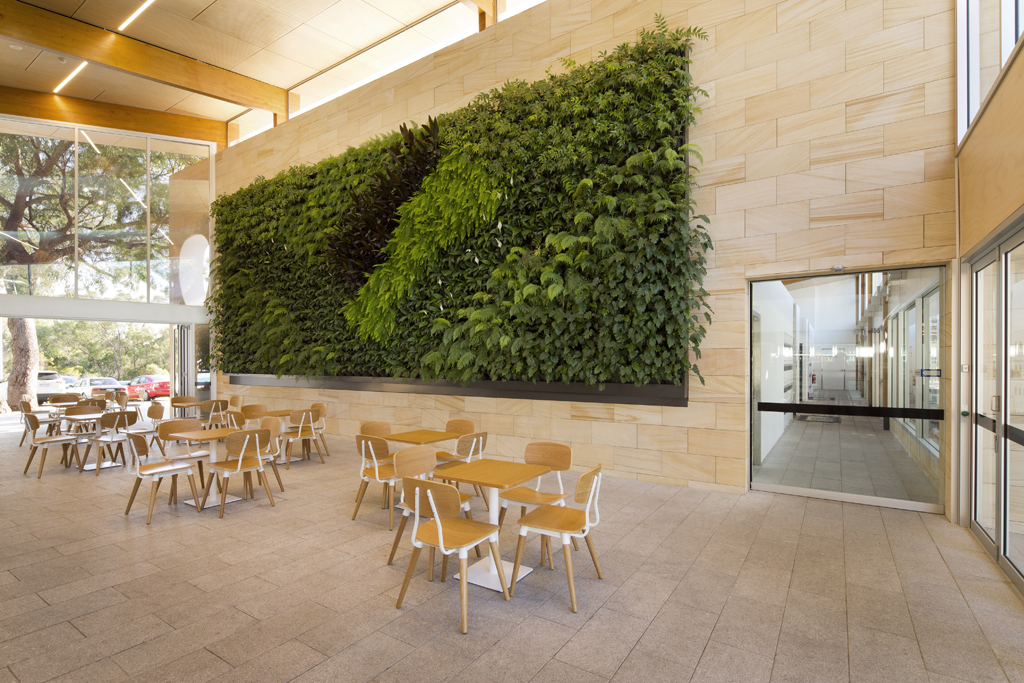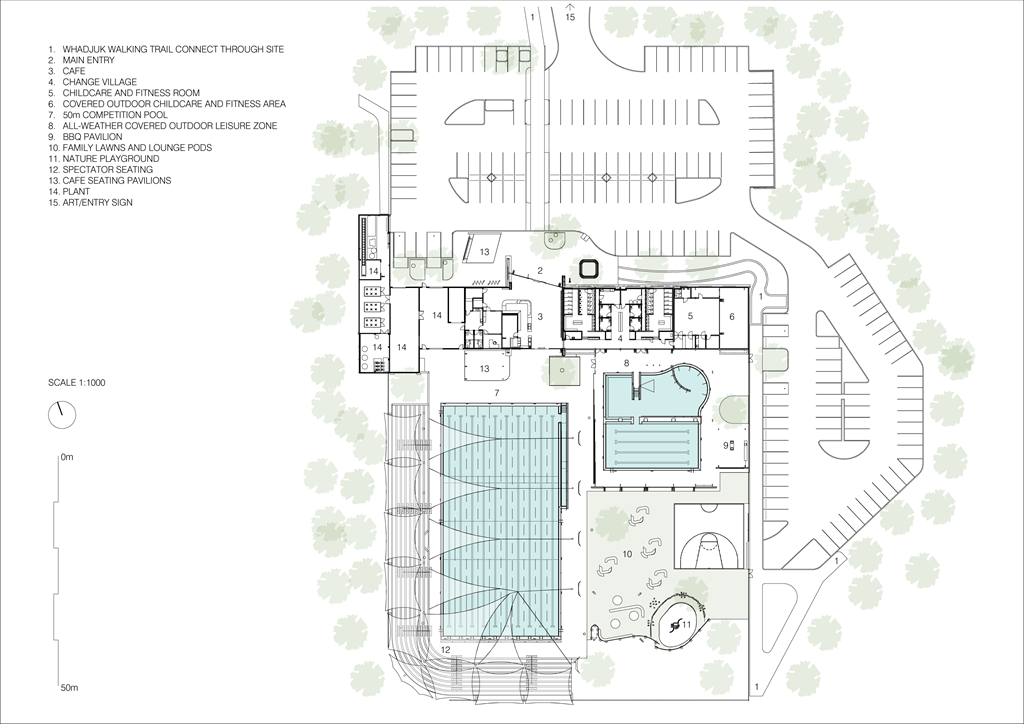Aquatic centres use massive amounts of energy as a result of heating the large bodies of water, but Donovan Payne Architects has aimed to minimise this in their design for Bold Park Aquatic.
To achieve this, the pool is heated by an evacuated tube solar hot water farm. The water is then protected with full pool blankets whenever it is not in use. High efficiency heat pumps and ultra-fine filtration support the systems to allow for the best possible result.
From an architectural building point of view, Donovan Payne Architects made the decision to only provide air conditioning to the cafe and office spaces - this reduces the air conditioning to only 25 per cent of the total building area, which has a large contribution to reducing the overall energy consumption.
The ceilings are all screw-fixed to encourage easier maintenance and designing for dismantling. The glulam’s and purlins are all bolted connections as well.
Low-VOC materials and Greentag materials were used wherever possible, and low-flow fixtures were used throughout.
Over 50 per cent of the building budget was already reserved purely for building the pools and plant equipment, which meant that decisions needed to be carefully made to preserve the budget, while reaching the desired sustainability aims.
 Australply FSC-certified plywood ceilings, walls, and joinery were the biggest contributor to the project in terms of clad area.
Australply FSC-certified plywood ceilings, walls, and joinery were the biggest contributor to the project in terms of clad area.

Radiata Pine and Cypress Glulams from Timber Engineered Structures makes up the bulk of the structure

Inside is a range of facilities that extends far beyond lap swimming: accessible ramps into pools, change rooms for wheelchair users or families with small children; a family bbq area; nature playground; and a focus on swimming for leisure and social connection.

Atlantis Gro-Wall Vertical garden in the entry

Acknowledging the surrounding bush-land on all four sides, the facility is grounded and recessed within its context - carefully located between the existing trees.

BPAC aims to raise the bar for sustainability within Aquatic Centres, with a focus on renewable timber for the glue-laminated timber structure and timber ceilings; solar hot water farms on the roof to heat the pools; ample natural light throughout; and a focus on energy-usage reduction in all of its systems.
KEY INITIATIVES
- Siting the building between the trees to ensure that as many trees as possible could be retained and showcased
- An extensive array of evacuated tube solar water heating panels, capable of heating all of the pools and which can be seen from any side of the Aquatic Centre
- A vertical garden in the cafe to demonstrate the relationship between patrons, the building and the surrounding landscape
- A focus on bringing the exterior into the interior. The majority of the spaces are designed to fully open up to the outside, and thus are not air conditioned spaces
- A primarily glue-laminated timber structure and plywood ceilings to showcase the beauty of nature, and represent the power of renewable products
- An entry sign that is all about framing the bush, and not about the sign
- Designed with passive solar design in mind
- Thermal mass inside the building to assist in regulating temperature
- There are skylights in the leisure pool area, glazing on three sides in the lobby and continuous clerestory lighting with motorised louvres to the south of the building, enabling controlled ventilation and light from the corridor to pass all the way into the more recessed rooms such as the change rooms and first aid
- Commissioning and handover
- Energy monitoring
- The primary energy system is the solar hot water farm that takes up the entire leisure pool roof, half of the change village roof, a portion of the lobby roof, and all of the plant roof and admin roof
- The majority of the building can be ventilated naturally or with mechanical assistance as required, using a hidden cross-ventilation system
- We have used pool blankets on all pools to reduce evaporation when not in use

